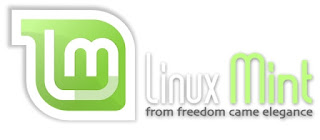Back to the home page

Installing applications in Linux Mint
Contents of this page:
- 1. Introduction
- 2. The advantages: ease and security
- 3. Three different ways of installing
- 4. The application Software Manager
- 5. Synaptic Package Manager
- 6. Avoid using it: manual installation
- 7. Want more tips?
Introduction
1. Linux Mint has a number of applications preinstalled, such as Firefox, Libre Office and Transmission. This is a pretty complete package, but hey, this is Linux and we want to make our own choices. Fortunately there are tens of thousands(!) of applications and software packages at your disposal.Perhaps you're accustomed to installing Windows applications by "simply" manually downloading the installer of an application that you fancy, from some website. In Linux Mint this works differently and even easier. You don't download anything manually from a website anymore.
Instead, you install only from the software repositories ("software store") of Mint itself. A lot easier, because you don't have to spend time searching. No more manual downloads!
The advantages: ease and security
2. The advantages of installing from the repositories are twofold: it's easy and it's secure. Not only is the software in the repositories safe, but all applications that you install from them, are being kept safe on your computer by the centralized update function.The updates from Linux Mint apply not only to Linux Mint itself, but also to all software that has been installed from the repositories!
Three different ways of installing
3. There are three recommended ways to install an application: by the application Software Manager, by Synaptic Package Manager or by the terminal commands sudo apt-get install or sudo apt install.Installing software is also possible by installing manually, like in Windows. This fourth way bypasses the inherent security of the repositories and is therefore discouraged.
The application Software Manager
4. Using Software Manager is easy:Establish internet connection.
Menu - Administration - Software Manager.
In the Search box, type the name of the application you want, for example inkscape if you want to install that fine vector based drawing application (useful for Christmas card design). Or a descriptive term, like vector.
Press Enter.
Double-click on inkscape and click the Install button.
That's it! The new application will be downloaded and installed automatically. A menu item for it, will be added automatically as well.
Synaptic Package Manager
5. With Synaptic Package Manager you have more fine-tuned control over the software packages that are in the software repositories of Linux Mint. More so than with Software Manager. In Linux Mint, Synaptic is no longer present by default, so you'll need to install it first, for example by means of Software Manager.Synaptic also works with queries, much like you use Google. In order to use it, you need to establish internet connection first.
Synaptic can be used like this: for example, you're looking for a simple notepad that's even leaner than the simple text editor Xed. You've heard of the application Mousepad, and you want to give it a try.
Launch Synaptic Package Manager.
Press the Search button in the toolbar of Synaptic and type mousepad in the popup screen.
Press Search in the popup screen.
Synaptic will then present you with a number of software packages that have something to do with Mousepad. In most cases you simply choose the package with the most appropriate name, in this case mousepad.
Notice also the description of the package, which appears below when you click on a package.
Tick mousepad and press the button Apply in the toolbar.
Now Synaptic fetches Mousepad from the repositories of Mint, along with the necessary supporting files, and installs it for you. A menu item for Mousepad will be added automatically.
Easy as can be!
Avoid using it: manual installation
6. Manual installation, like in Windows, is also possible in Linux Mint. But this is discouraged, because it bypasses the inherent security of the software repositories! Also you won't have the benefit of the centralized update function, for manually installed software.For manual installation you'll need to download an installer with the extension .deb (from Debian: both Ubuntu and Linux Mint are based on Debian). Simply double-click it like you would a Windows installer (.exe) in Windows.
Installers with the extension .rpm (Red Hat Package Management) are useless in Linux Mint: those are installers made for other kinds of Linux distributions that are rpm-based.
You can also manually install Linux software that has no installer at all (mostly .tar.gz packages). But that's usually an awful job and definitely not suitable for beginners.
Want more tips?
7. Do you want more tips and tweaks? There's a lot more of them on this website!For example:
Speed up your Linux Mint!
Clean your Linux Mint safely
Avoid 10 fatal mistakes
To the content of this website applies a Creative Commons license.
Back to the home page
Disclaimer